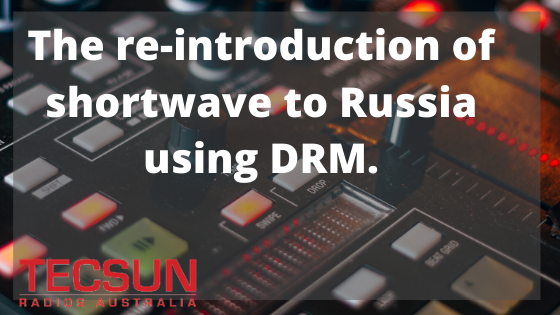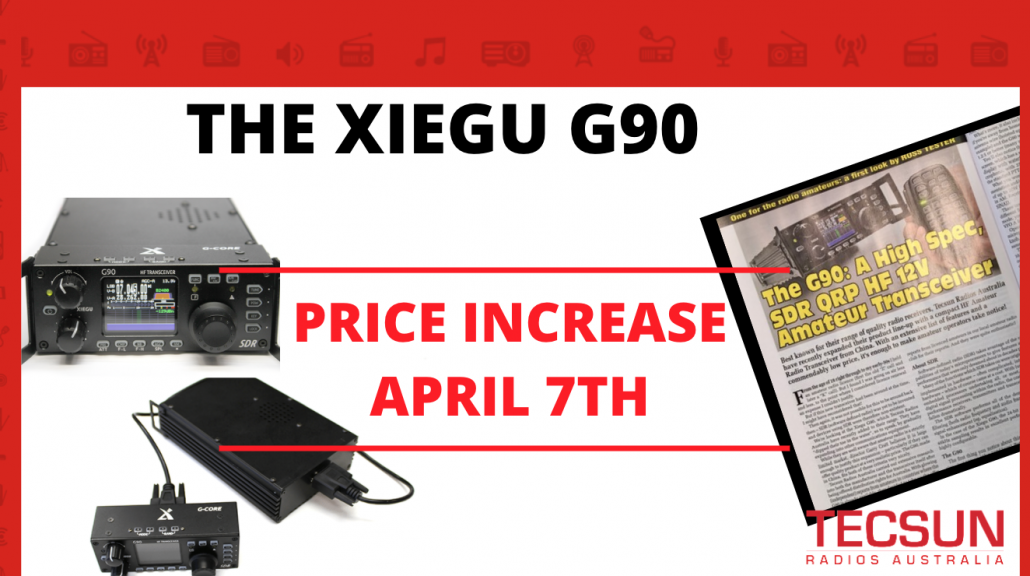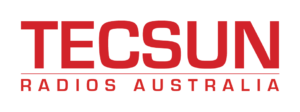 Russia is considering the re-introduction of shortwave radio using DRM (Digital Radio Mondiale), a technology which is designed to cover large areas at modest operating cost.
Russia is considering the re-introduction of shortwave radio using DRM (Digital Radio Mondiale), a technology which is designed to cover large areas at modest operating cost.
Prior to the 2000’s, shortwave was broadcast in Chukotka for communications across the far northeastern region of Russia and the Northern Sea but was gradually discontinued as funding became more difficult to obtain.
Due to the unique capabilities of shortwave transmissions coupled with the new capabilities of DRM, an audience size of a few thousand spread over a vast area could be best serviced by shortwave again.
Transmitting shortwave digitally offers the advantage of long-distance coverage and a higher fidelity signal. Text information such as news and weather can also be embedded in the signal and decoded at the receiver. Recent studies show that DRM is just as reliable as analog shortwave over this distance via single-hop transmission. An added benefit of DRM transmissions is they use a quarter of the power that analog transmissions.
This new shortwave service is named Radio Purga (“Radio Blizzard”), a joint project between the government in Chukotka and the Far Eastern Regional Center and the government in Chukotka
The target audience includes people in the Northern Sea including mariners, miners, geologists, hunters, and nomadic reindeer herders. All of these groups would benefit from both news and weather as well as traditional entertainment programming.
A range of test transmissions commenced in August 2019 via different DRM modes and bandwidths to trial “hardware setup and determine signal acceptability,” with the goal of covering over 95% of the area. Programming consists of a music loop and interestingly has been heard as far away as the United States.
Currently the broadcaster is still carrying out transmission tests on 5935, 6025, 11860 and 15325Khz.
Radio Purga’s regular programming is expected to begin sometime in the next few months. One of shortwave’s finest capabilities is to communicate to hard-to-reach locations. Radio Purga’s audience is spread over a remote and vastly spread region.
Resuming shortwave via DRM will provide the population with a critical communication source in both audio and text.

Have you seen the latest edition of Silicon Chip magazine? Our latest product the Xiegu G90 has its own 2 page spread with a favourable review by ROSS TESTER.
The most notable features are: transmit power of up to 20 watts adjustable in 1 watt increments so output power can be adjusted to suit band conditions, built in ATU, detachable control head for vehicle operations, and a superb general coverage receiver.
Operating frequencies can be directly-entered via the microphone keypad or “dialled up” using the 1.8 inch front panel with 25 push buttons for control.
ROSS TESTER noted that online reviews of the G90 world wide, rate the transceiver at least 4 stars, with many rating the radio 5 out of 5. The unit has been reviewed recently in QST magazine in the USA and Radcom, the monthly magazine of the Radio Society of Great Britain.
Here at Tecsun Radios Australia we heavily research and test new products and much consideration is put into what products we release to the market.
The Outstanding Features of the Xiegu G90 for us are the following.
** 20 watts output power
** Inbuilt ATU
** Detachable front panel
** Superb general coverage receiver
** Waterfall and spectrum display
In addition to these fantastic features the Xiegu G90 represents fantastic value retailing for around half the price of most transceivers on the market.
The Xiegu G90 transceiver is available for order in our webstore with same day shipping available for orders placed before 12pm Business days.
Are you looking to add the Xiegu G90 Transceiver to your collection? Get yours here.
See a preview of the article by clicking here.

Do you enjoy listening to shortwave and have noticed the frequencies used by your favourite broadcaster change twice a year? Interestingly there is a scientific reason behind this.
Shortwave travels long distances because of its unique way of propagating. The transmission is beamed upwards towards the sky where it is reflected back down to earth spanning a huge distance between the two points. In good conditions a single transmitter is able to reach millions of listeners around the world.
This is what makes shortwave unique and incredibly effective, especially to remote audiences as well as to areas where news and information is highly controlled.
As a general rule, higher frequencies (SW) work best during daylight hours and summer time while lower frequencies (MW) work better in darkness – before dawn and during the long winter evenings.
This same frequency can not be used all year round because as the seasons change the number of daylight hours at any location can directly affect the optimum frequency band. This is because the energy from the Sun required to ionise reflective layers in the upper atmosphere is directly impacted by the sunlight hours available. So seasonal changes causing shorter sunlight hours will affect daily propagation of a higher frequency, and so a lower frequency will need to be chosen to provide similar coverage during the period of shorter days.
The High Frequency Coordination Committee (HFCC, under the ITU International Telecommunications Union) is the body that has the responsibility to decide when to change shortwave frequencies.They must coordinate these changes with all the major shortwave broadcasters around the World.
To ensure the optimal transmission conditions the HFCC recommend two seasonal frequency schedules – summer and winter – known as the ‘A’ and ‘B’ seasons.
The changeover between seasons is internationally agreed to occur on the last Sunday in March (start of ‘A’ season) and the last Sunday in October (start of ‘B’ season), which coincides with start and end of ‘Daylight Saving’ in many countries, where local time can change.
The changeover ‘A20’ season has just occurred on Sunday 29th March, and the frequencies agreed for all shortwave transmissions will continue until the beginning of the next season ‘B20’, on Sunday 25th October.


